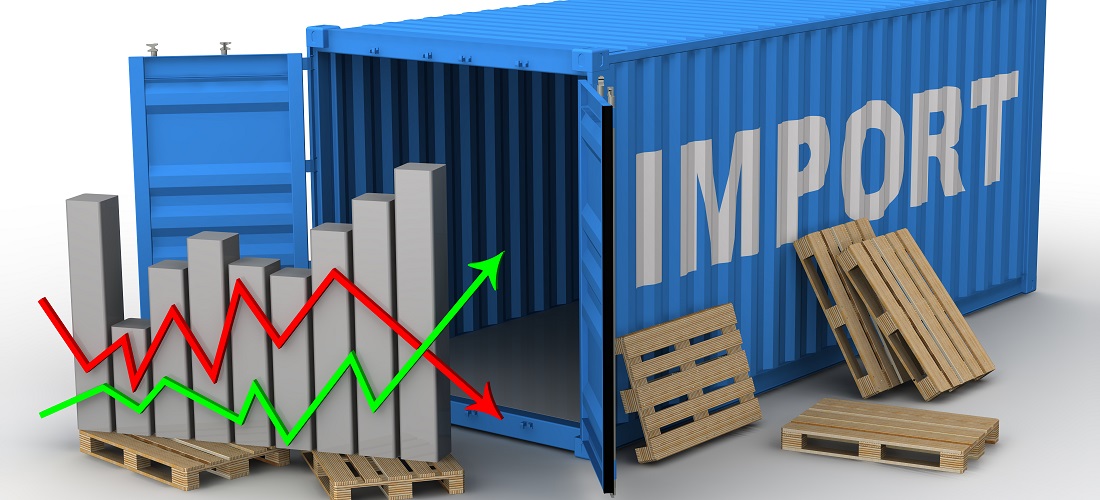
East Coast South American container imports nose dive in first half
Aug, 04, 2020 Posted by datamarnewsWeek 202031
East Coast South American container imports fell 39% in June of 2020 compared to the same period last year, according to DataLiner data released on Monday, August 3rd. “We haven’t seen such a low volume since July 2009, when we were still recovering from the 2008 global financial crisis,” says Datamar CEO Andrew Lorimer. “These figures reflect the impact the Covid-19 pandemic is causing in the world economy,” he adds.
ECSA imports by country | Jan 2019 to Jun 2020 (TEU)
Source: DataLiner
Imports of goods into ECSA | Difference between May and June
| wdt_ID | Commodity | May | June | % change |
|---|---|---|---|---|
| 1 | PLASTICS AND ARTICLES THEREOF | 26.070 | 20.183 | -23% |
| 2 | NUCLEAR REACTORS | 15.581 | 11.431 | -27% |
| 3 | ORGANIC CHEMICALS | 13.075 | 11.604 | -11% |
| 4 | ELECTRICAL MACHINERY AND EQUIPMENT | 12.670 | 7.896 | -38% |
| 5 | RUBBER AND ARTICLES THEREOF | 7.488 | 4.160 | -44% |
| 6 | MISCELLANEOUS CHEMICAL PRODUCTS | 6.800 | 7.045 | 4% |
| 7 | FERTILISERS | 6.654 | 6.809 | 2% |
| 8 | PAPER AND PAPERBOARD | 5.913 | 4.408 | -25% |
| 9 | INORGANIC CHEMICALS | 5.562 | 5.320 | -4% |
| 10 | VEHICLES | 5.280 | 3.791 | -28% |
ECSA imports by trade lane | Jun 2020 | TEU
Source DataLiner
In addition to the fall in demand from companies for imported products and equipment, the appreciated exchange rate has also hit imports hard. On the other hand, it benefits exports. Despite this, restrictions on Brazilian exports can hurt the economy. China recently suspended the authorization of several Brazilian slaughterhouses due to cases of Covid-19 and is carrying out tests with other commodities imported from Brazil, such as soybeans. This is a point to be aware of and monitor for possible further impact in the future.
ECSA exports by country | Jan 2019 to Jun 2020 (TEU)
Source: DataLiner
Despite the falling economy, shipowners and the maritime transport segment, in general, have been able to balance supply and demand. The reduction in operational capacity, with the adoption of blank sailings and cheaper fuel, has led shipowners to maintain the level of freight and profits at a reasonable level, a positive point that is reproduced in all other links in this chain, such as OTIs and terminals.
Fall in imports expected to continue in July
The tendency is that this fall in imports will continue in July, since according to trade balance data released on August 3 by the Ministry of the Economy, Brazil had a trade surplus of US$8.1 billion in the seventh month of the year – the highest for all months since the ministry´s record-keeping began in 1989.
In the accumulated total for January-July, the Brazilian balance had a surplus of US$30.4 billion, above the US$28.1 billion seen in the same period last year. For the whole of 2020, the Ministry of the Economy forecasts a surplus of US$55.4 billion, above the US$48.1 billion dollar mark reached last year, an estimate that was updated in June.
-
Ports and Terminals
Apr, 14, 2021
0
New ordinance reduces port-leasing bureaucracy
-
Ores
Nov, 08, 2022
0
Iron ore prices rise to USD 89 per tonne on the spot market
-
Trade Regulations
Sep, 03, 2021
0
Delay in issuing export certificates reflects lack of inspectors, says source
-
Ports and Terminals
Apr, 13, 2022
0
Port of Paranaguá’s new pulp terminal is nearing completion; the unit is scheduled to begin operations this year


